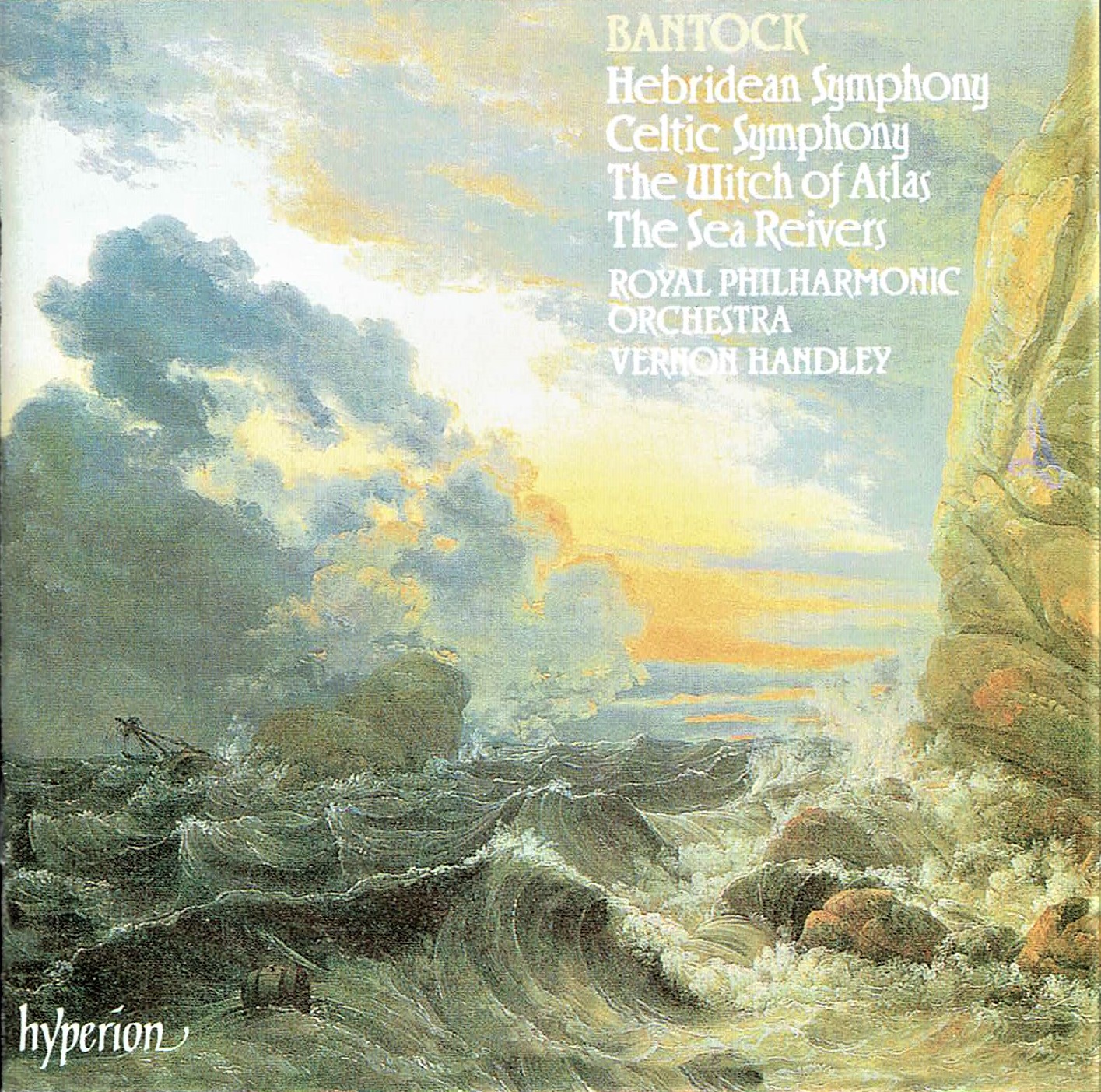
Grove Koger
This review of works by Granville Bantock, who was born August 7, 1868, appeared originally in the May/June issue of Disc Respect, published by Boise’s Record Exchange.
□□□
Granville Bantock: Hebridean Symphony, Celtic Symphony, The Witch of Atlas, The Sea Reivers. Vernon Handley, Royal Philharmonic Orchestra
Like several other British composers, Granville Bantock (1868-1946) was fascinated by the Celtic world, specifically the Hebrides, the tempest-tossed islands lying off the western coast of Scotland. He was once celebrated as a major force in British music, but has passed into obscurity instead. His love of the massive and the extravagant came to count against him, but now the time for his rediscovery has arrived with a new CD from Hyperion.
The big selection here is the Hebridean Symphony of 1913, first performed in 1916 in Glasgow. It’s a work in nine sections, played in one 35-mninute movement. Like most of Bantock’s Hebridean-inspired works, it’s based on folk songs gathered by one Marjorie Kennedy-Fraser early in the twentieth century. The symphony follows a vaguely programmatic course, involving “marauding ships,” “clansmen gathering,” and “sea mist and ancient legend.” (I’m leaning here on Hyperion’s detailed notes.) After listening to the Hebridean Symphony the first time, I realized that the hair had been standing up on my arms the entire time.

The rousing Sea Reivers (subtitled Hebridean Sea Poem No. 2) seems to have been planned as a section of the Hebridean Symphony. And what a fine encore it would make for some adventuresome orchestra in place of the slightly tarnished goods usually trotted out for such occasions!
The earliest work on this CD, The Witch of Atlas (Tone Poem No 5) was inspired by a long work by Percy Bysshe Shelley and dates from 1902. It sounds like a cross between The Sorcerer’s Apprentice and a sweepingly romantic, terribly British movie score. Shelley’s poem describes the witch in question as being so striking that “her beauty made / The bright world dim, and everything beside / Seemed like the fleeting image of a shade.” The appeal to someone of Bantock’s temperament is obvious.
Bantock completed his Celtic Symphony when he was 72, scoring it for string orchestra and six (!) harps. Like the earlier symphony, it’s played in one continuous movement (at just under 20 minutes here), and like its longer counterpart, incorporates Hebridean folk songs. Its main theme bursts forth periodically with a throbbing, passionate intensity, and only comes to rest, in dialogue with the harps, in the final section, Largamente maestoso.
□□□
You can hear a different, but nearly as good performance of the Celtic Symphony at https://www.youtube.com/watch?v=oy_hQGQcISM.
The striking image on the CD’s notes is a detail from Morning after a Stormy Night by Johan Christian Clausen Dahl. The pencil drawing of Bantock is by an unknown artist and is reproduced from New York Public’s Digital Library.